Jeju Aerospace Museum (제주항공우주박물관)
12.2 Km 4320 2018-08-07
218, Nokchabunjae-ro, Andeok-myeon, Seogwipo-si, Jeju-do
Jeju Aerospace Museum is the largest aerospace museum in Asia. The museum not only offers information and exhibitions related to aerospace as well as astronomy, but it also integrates education with entertainment to provide an enjoyable learning opportunity for both kids and adults. The view from the museum’s second floor is another sight not to be missed.
Hyeopjaegul Lava Tube (Hallim Park) (협재굴(한림공원))
12.3 Km 18648 2021-06-09
300, Hallim-ro, Jeju-si, Jeju-do
+82-64-796-0001
Hyeopjaegul Lava Tube is one example of the lava tube systems of Jeju Island, along with Hwanggeumgul, Socheongul, Ssangyonggul and Manjanggul Lava Tubes. The cave is approximately 200 meters in length, 10 meters in x_width and 5 meters in x_height. It is thought to have been created by the lava that erupted from Hallasan Mountain some 25 million years ago. This cave uniquely contains features of both lava and limestone caves. The entire area surrounding the cave is a huge stratum of seashells and sand, while the interior of the cave has a mystical ambience due to its various formations such as stalactites and stalagmites, hanging from the ceiling and sprouting up from the bottom of the cave. The cave also features pillars formed when stalactites and stalagmites join together. The cave walls are covered in lime, which at times looks like beautiful cave paintings. The temperature inside the cave stays at 17~18℃ throughout the year, making the cave a welcome escape from the summer heat and a great place to keep warm during winter.
Hyeopjaegul Lava Tube has been designated Natural Monument No. 236 and ranks among the world’s major mysterious caves, such as the stone salt cave of Peru and the underwater limestone caves of Yugoslavia. As Hyeopjaegul Lava Tube is close to Ssangyonggul Lava Tube, the two can be visited on the same day.
Geumneung Beach (금능해수욕장)
12.3 Km 34175 2023-02-16
Geumneung-gil, Jeju-si, Jeju-do
+82-64-728-3983
Clear waters, a beautiful beach with white sand and seashells, fantastic sunset, and the view of Biyangdo Island beyond sum up to describe Geumneung Beach. The white sandy beach where the bottom of the shallow, blue water is clearly seen creates an illusion that one can easily walk all the way to Biyangdo. With clear, shallow waters and amenities like the shower booth, Geumneung Beach is a family-friendly vacation destination.
Geumneung Beach is directly connected to Hyeopjae Beach, another popular tourist spot on the west side of Jeju Island. However, despite the common charming elements the two beaches share, Geumneung Beach sees a relatively small number of visitors than its neighbor, so it exudes a more relaxing vibe. Moreover, the beach and the parking lot are directly connected, making it more convenient to move baggage and other belongings. The newly built showers supply warm water, which is another advantge of the beach.
It is recommended to visit the beach during the hours of ebb tide. Once the sea water recedes afar, a vast, beautiful sandy beach appears. The water is shallow in many parts where natural swimming pools are formed, allowing little children to be able to play safely.
Ssangyonggul Cave (Hallim Park) (쌍용굴 (한림공원))
12.5 Km 23189 2022-09-13
300, Hallim-ro, Jeju-si, Jeju-do
+82-64-796-0001
Ssangyonggul Cave, a designated Natural Monument, is one of the representative lava tubes of Jeju Island along with Hwanggeumgul, Socheongul, and Manjanggul caves. The cave measures approximately 400 meters in length, 6 meters in x_width, and 3 meters in x_height. It is thought to have been created by lava that erupted from Hallasan Mountain some 25 million years ago.
One of the unique features of this particular cave is that it has features of both a lava tube and a limestone cave. The entire area surrounding the cave is a huge stratum of seashells and sand, while the interior is a mystical mix of stalactites and stalagmites. Lime covers the cave walls in a series of natural swirls and streaks, bringing to mind the strokes of an abstract painting. Since the cave stays at a constant 17-18℃ throughout the year, it’s a welcome escape from the heat in the summer and a great place to warm up in the winter.
The cave gets its name from its two branches, which are said to look like the paths of two dragons (‘Ssangyong’ meaning ‘two dragons’ in Korean). It is thought that Ssangyonggul Cave and Hyeopjaegul Cave were once one cave since the second entrance of Ssangyonggul Cave is so close to the end of Hyeopjaegul Cave.
Manor Blanc (마노르블랑)
12.5 Km 0 2024-02-20
46 Iljuseo-ro 2100beon-gil, Andeok-myeon, Seogwipo-si, Jeju-do
Manor Blanc is a café that features a beautiful garden adorned with hydrangeas in summer, pink muhlies in fall, and camellias in winter. From late fall to winter, the café also offers citrus picking experiences. Their drink menu includes homemade hallabong ade, green tangerine ade, and Jeju lemon ginger ade. Visitors can enjoy the views of Sanbangsan Mountain and Seogwipo Sea from the second floor of the café.
Hallim Park (한림공원)
12.5 Km 100735 2023-03-13
300, Hallim-ro, Jeju-si, Jeju-do
+82-64-796-0001
Hallim Park is one of the most popular tourist spots on Jeju Island, located approximately 33 kilometers west of Jeju-si and Hallasan Mountain along the beach in Hallim-eup. It faces the pleasant scenery of Biyangdo Island, Hyeopjae Beach, and Geumneung Beach. The park was established in early 1971 on barren land with the importation of tons of earth and the planting of assorted subtropical plants.
Hallim Park, reaching almost 100 thousand square meters, has a variety of gardens that can be enjoyed in any season. Visitors can enjoy Palm Tree Road, Jeju Stone and Bonsai Garden, Water Garden, Subtropical Botanic Garden, and much more. The most famous tourist sites in Hallim Park are Hyeopjaegul and Ssangyonggul Caves, known to be the only two-dimensional caves in the world. In addition, a folk village, children's amusement park, and outdoor resort facilities make it enjoyable for both children and adults.
M1971 Yacht Tour (M1971요트투어)
12.5 Km 0 2024-01-09
128 Choenamdanhaean-ro, Daejeong-eup, Seogwipo-si, Jeju-do
M1971 is a yacht tour destination in Moseulpo, Jeju. The representative program, Dolphin Eco Tour, promotes Jeju's natural scenery through the safe navigation of the captains and offers tourists an amazing experience to observe wild dolphins. As a form of sustainable tourism, M1971 is attracting the attention of many people and contributing to local tourism development. Furthermore, for the development of the marine leisure industry, M1971 is developing and operating various marina comprehensive management services and marine-related activities. Above all, M1971 is always doing its best to protect Indo-Pacific bottlenose dolphins in Jeju Island. Enjoy not only the dolphins but also the beautiful sunsets in the western sea.
Stone Grandfather Restaurant (돌하르방)
12.6 Km 15431 2020-05-29
300, Hallim-ro, Jeju-si, Jeju-do
+82-64-796-0001
Located in Jaeam Folk Village (Hallim Park), the restaurant is spacious and is well known for its traditional local dishes such as charcoal-grilled Jeju pork, seafood and mung bean pancake, nutritious sea urchin soup, and jopssalju (Jeju-style wine made of millet and yeast). It also serves cold herb naengmyeon in the summer and pheasant buckwheat kalguksu (knife-cut noodles) and a local dish called pheasant bingtteok in winter.
Daejeonghyanggyo Confucian School (대정향교)
12.7 Km 17304 2019-12-26
165-17, Hyanggyo-ro, Andeok-myeon, Seogwipo-si, Jeju-do
+82-64-742-8866
Daejeonghyanggyo was a Confucian school during Joseon Dynasty. Although the exact date of construction is uncertain, it is estimated that the building was built around the same time as Daejeonghyeon in 1416.
The school was originally located inside Bukseong but it was once moved outside of Dongmun and then again to the site of Seoseong. It was finally moved to Dansan Oreum where it remains to this day. At present, Daejeonghyanggyo Confucian School consists of Daeseongjeon, Myeongryundang, Dongjae, Seojae Shinsammun, Daeseongmun, Dongmalmun and Dongjeongmun. Daeseongjeon was remodeled in 1669, 1688, and 1752. Myeongryundang was rebuilt in 1772. After several instances of remodeling and rebuilding, Daeseongjeon was remodeled again in 1993. The Confucian school was designated as the Jeju Tangible Cultural Asset No. 4 in August 1971.
Hamo Beach (하모해변)
12.7 Km 18641 2021-06-24
Choenamdanhaean-ro, Seogwipo-si, Jeju-do
+82-64-760-6000
Hamo Beach is located near Moseulpo Port, and is sometimes referred to as Moseulpo Beach. The beach used to be open for swimming but a variety of issues caused the beach to close for safety. The beach is located along Jeju Olle Trail Course 10, and features a campground nearby. The campground is a paid service and requires advance reservation during peak season. In summer, visitors can enjoy sea walking here, a water leisure sport featuring a diver's helmet. Across from the beach is a field of sunflowers standing before Sanbangsan Mountain.

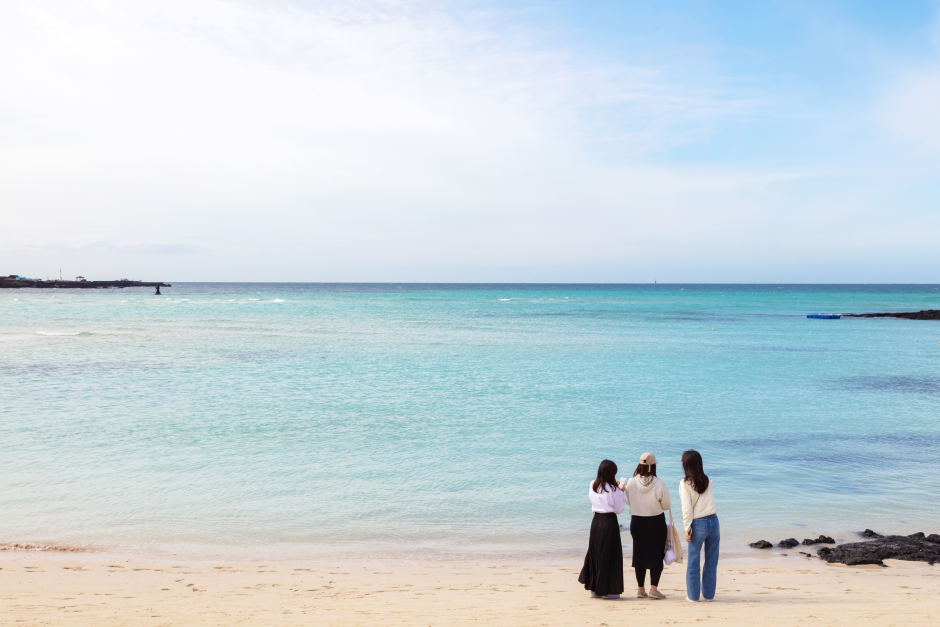
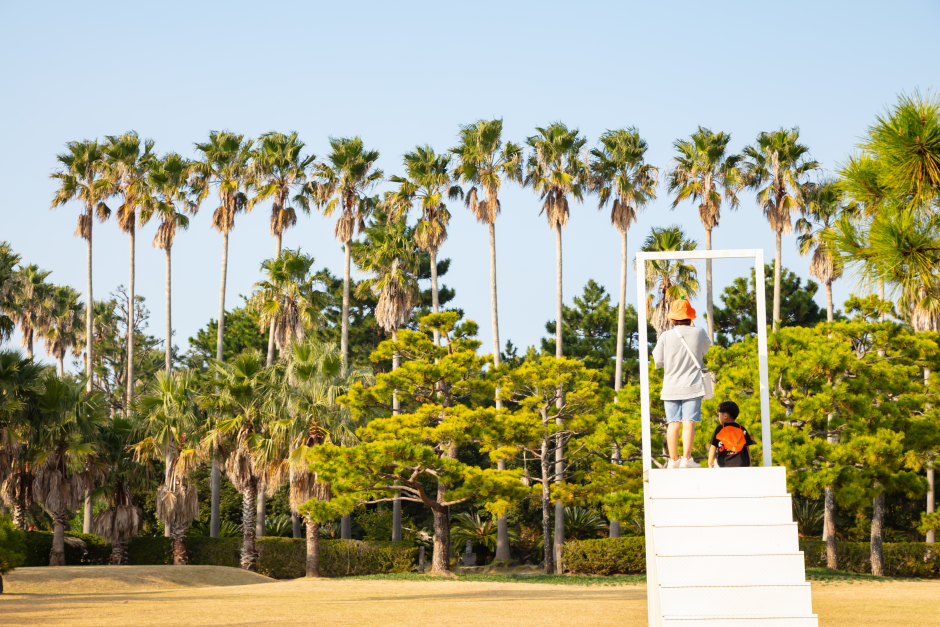
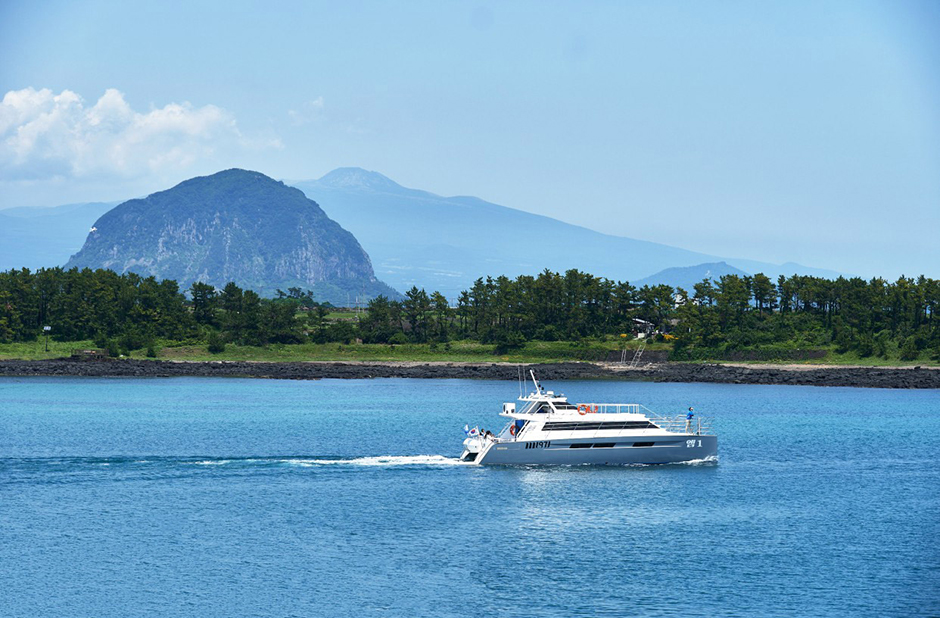
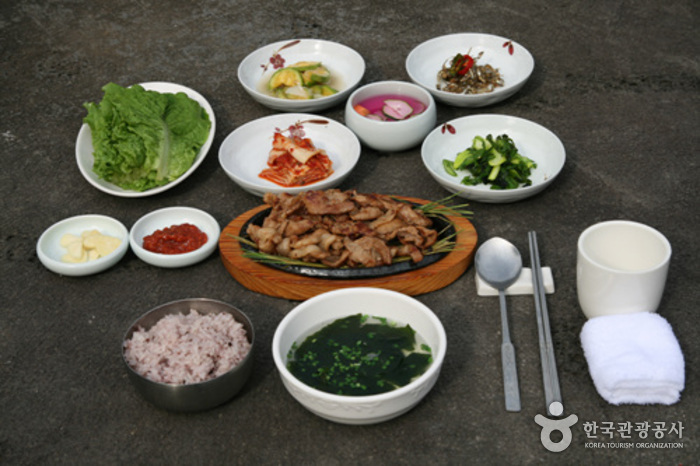
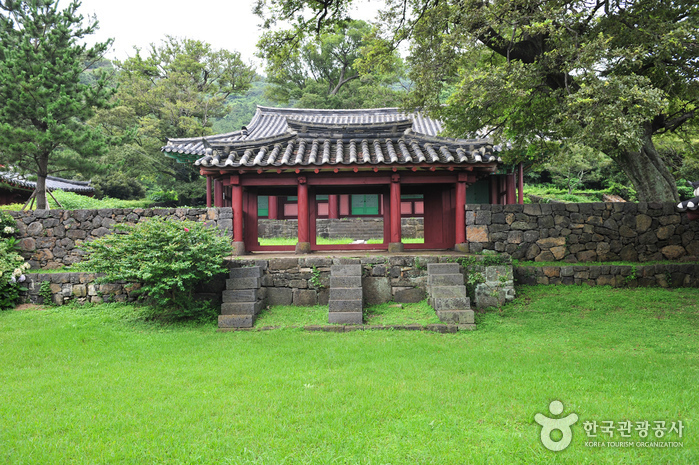
 English
English
 한국어
한국어 日本語
日本語 中文(简体)
中文(简体) Deutsch
Deutsch Français
Français Español
Español Русский
Русский